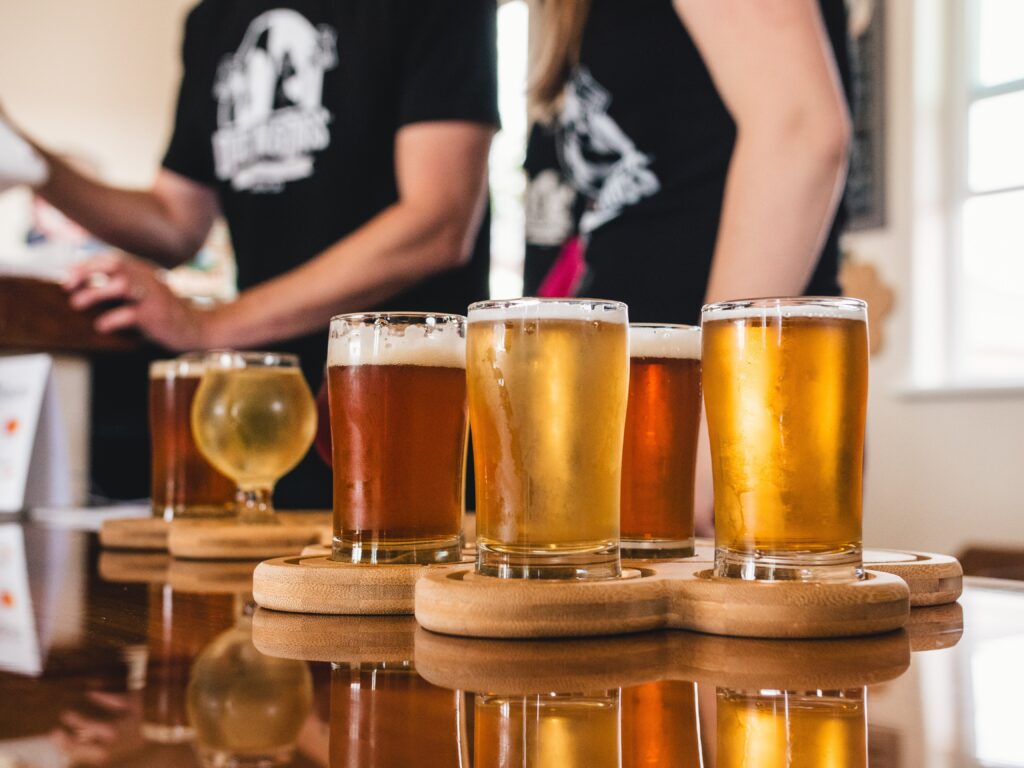If you’re like me, you have probably always associated fermentation with making sourdough bread or culturing yoghurt. But the process of fermentation has been used for centuries to preserve food.
It is a process that uses bacteria or yeast to break down complex carbohydrates into simpler molecules, like alcohol or lactic acid. This process creates an environment that is hostile to spoilage organisms, meaning your food will stay fresh for longer. It also creates the distinctive sour flavour of fermented foods.
It’s a preserving method that you can practice at home which creates delicious and health-supporting preserves for you to enjoy. So if you’re interested in learning more about this age-old preservation method, read on!

A Brief History of Fermented Foods
Fermentation is one of the oldest methods of food preservation. The earliest known evidence of this technique comes from China. There, people made rice wine this way as early as 7000 BCE.
They also used this process to produce soy sauce in China , and to make beer in Mesopotamia.
In more recent history, people use fermentation to create a wide variety of foods and beverages, including bread, cheese, yoghurt, wine, and beer. With the help of fermentation, we have been able to preserve food for centuries, and it continues to play an important role in food production and our diets today.
What is fermentation and how does it work
This age-old process works by using naturally occurring beneficial microorganisms to convert carbohydrates into alcohol or acids. This process prevents the growth of harmful bacteria, while also extending the shelf life of food by reducing the risk of spoilage. Fermentation imparts a unique flavour that is prized by many cultures across the world. And it is becoming increasingly popular throughout the modern world now too.
You can use fermentation to preserve a variety of foods, including meat, dairy, fruits, and vegetables. In addition to extending the shelf life of food, fermentation can also improve its flavour and nutritional value by increasing the levels of vitamins and minerals in food. Similarly, it can also create new compounds that have health benefits, such as antioxidants.
There are different fermentation processes, each with its unique flavour profile and intended outcome. Examples include:
- Lacto-fermentation – a fermentation process that uses lactic acid bacteria to convert carbohydrates into lactic acid. In this way fermented foods acquire their sour flavour. This approach is commonly used to make sauerkraut and pickles.
- Alcohol fermentation uses yeast to convert sugars into alcohol. This is the path to making beer and wine.
Each fermentation process can be used to preserve different types of food. And the flavours produced will vary depending on the type of fermentation used.
The benefits of fermentation
- Fermented foods are an excellent source of probiotics, which are beneficial for gut health. As a result, in recent years, this technique has experienced a resurgence in popularity with more people actively looking for ways to add healthy probiotics to their diets.
- It can help to break down complex carbohydrates and make them more easily digestible.
- Foods preserved and prepared in this way are also a good source of vitamins and minerals, which can sometimes be difficult to obtain from other sources.
- Finally, fermentation can help to increase the shelf life of food, making it a valuable tool for both home cooks and professional chefs.
Types of food to ferment
You can preserve by fermentation for a wide variety of foods, including vegetables, fruits, meat, and dairy.
There are several different types of fermentation products, including pickles, kimchi, kombucha, sauerkraut, beer brewing, winemaking, and yoghurt. With this method you can create a variety of unique and delicious flavours.

While the process of fermentation can and does occur naturally in the environment, it can be also done deliberately to preserve different foods. This is the case with the creation of cheese, yoghurt, and sauerkraut.
These foods often have a distinct taste and smell, which can be an acquired taste for some people.
Fermenting foods at home
Fermentation is an increasingly popular way to preserve food and extend its enjoyment. It can be easily done at home with the right ingredients and supplies.
You need to allow the microbes to convert sugars into acids, alcohols, and other compounds. These natural changes help to preserve the food. And they also create the unique flavour profiles that are prized by many cooks.
If you’re interested in fermentation, there are a few things you need to know.
1. Fermentation requires time and patience. It is a slow and calm path to deliciousness. The fermentation process can take days or weeks to complete.
2. It requires a warm environment. The ideal temperature for fermentation is between 20-29 degrees Celcius.
3. This technique requires clean utensils and containers to minimise bad bacteria and maximise good ones. Be sure to sterilize all of your equipment before beginning the fermentation process.
Tips for fermenting at home
- To ferment foods at home, you will need
- An airtight container
- A weight to keep the food submerged
- For some recipes, a fermentation starter such as water kefir or yoghurt.
- Ideally choose a food that is high in sugar or starch. The options include fruits, vegetables, grains, or milk as these are the building blocks of the process.
- The development of the fermented product will take anywhere from a few days to several weeks. So it is important to monitor the food carefully and taste it regularly. When fermentation is complete, you can store the food in the refrigerator to slow down or stop the active process and further extend the shelf life.
With a little time and practice, you can easily ferment foods at home and enjoy the delicious results.
The risks and dangers of fermentation
While fermentation can be a great way to preserve food, there are some risks and dangers associated with fermentation at home, including:
- If you do not carry out the process properly and hygienically, the food can spoil and become unsafe to eat.
- As with other food preservation methods, fermentation can also produce harmful toxins if the wrong microorganisms are present.
- The fermentation process produces air bubbles. If you do not release these regularly, the contents may leak or explode.
As a result, it is important to adhere to safe practices and food hygiene when creating food fermentation products at home.
Fermented foods for health and wellness
While the fermentation process prevents the growth of harmful microorganisms, it also helps to preserve the nutritional value of the food.
These foods are also a good source of probiotics, which are live bacteria that can have health benefits when consumed. Probiotics act to improve gut health by helping to maintain a healthy balance of intestinal flora. They may also help to boost the immune system and reduce inflammation.
In addition, fermentation can increase the absorbability of certain nutrients, such as vitamins and minerals. For all these reasons, fermented foods can be an important part of a healthy diet.
Examples of fermented preserves:
Pickles:
Cucumbers or other vegetables are preserved in brine and develop by the process of lacto-fermentation.
Sauerkraut:
This is a dish made from fermented cabbage that has a tangy flavour. It is often used as a condiment or side dish.
Kimchi:

A spicy Korean side dish made from fermented vegetables, typically cabbage, with a variety of seasonings and spices.
Kefir:
A fermented milk drink that contains beneficial bacteria and yeasts and has a sour taste similar to yogurt.
Yoghurt:
A dairy product made by fermenting milk with live cultures of bacteria, which gives it its signature tangy flavour and thick texture.
Fermented salsa:
A type of salsa that has been fermented using lactobacillus bacteria, giving it a tangy, slightly sour flavour and increased nutritional value.
Fermentation is an age-old process of food preservation, and it’s one that you can do right in your own kitchen. The result is a delicious and healthy product that can be enjoyed by all. If you’re curious about fermentation, we encourage you to give it a try. You may be surprised at how much you enjoy the end product – not to mention the health benefits!